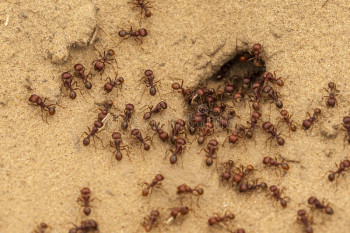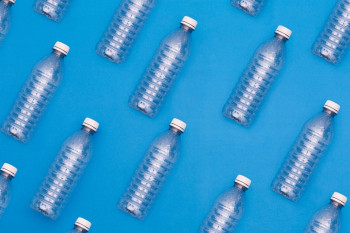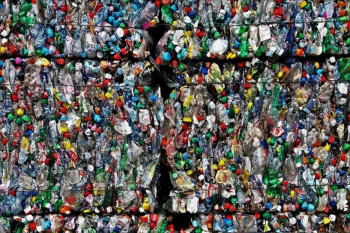© Pint of Science, 2025. Alle Rechte vorbehalten.
This week we are starting a series - TrashTalk - with Harsha, member of Pint of Science Austria and a material tribologist with a special focus on thermoplastics. He studies the interaction between different materials as they rub against each other, the friction generated between them and the associated wear and tear. Enjoy!
When I first learnt about the different types of materials used in packaging, I often spent time gazing at the supermarket shelves trying to figure out what comes wrapped in what. Some products are packaged in metal containers, wrapped with paper or completely devoid of packaging. Beverages come in polyethylene terephthalate (PET) bottles, pouches and detergent bottles come in polyethylene (PE) packaging and yogurt in polypropylene (PP) cups. So, a lot of products are packaged in plastic, and the vast majority of raw materials used to make such plastics are derived from fossil fuels.
Plastic is an umbrella term for a class of materials, all of which are made up of long spaghetti-like molecule chains. Each such spaghetti strand is made up of repeating units of one type of molecule (or several, depending on how you like your spaghetti), and they are named after this repeating unit with a prefix ‘poly’. Controlling how the molecular chains are arranged with respect to one another lets us tweak their properties to a great extent. Take PE for instance: the same material used to produce food wrap foil is also used to make shampoo and detergent bottles, and sturdy beer crates (something that Pint of Science deeply cares about). This is achieved by controlling how densely the molecular chains are packed and this gives rise to low-density polyethylene (LDPE) and high-density polyethylene (HDPE). Plastic production has grown exponentially in the last two decades, and – rightly so – plastics also enjoy a bad rep. According to some estimates, more than half of all the existing plastics were made in the current millennium.
So, what happens when we throw away plastic?
According to Plastics Europe, in the recent years, only a third of the discarded plastic gets recycled in the EU while a quarter ends up in landfills, and the rest are burnt to generate energy. A 2019 EU Directive (EU) 2019/852 on Packaging and Packaging Waste sets recycling targets per material of 50% for plastic packaging by 2025 and 55% by 2030. As of now, 40% of the plastic produced goes towards short-term use, which mainly includes packaging. The 5 types of plastics that comprise most of the packaging around us are: PET, PE, PP, PVC and PS in the same order. Consumer products and packaging made of plastic must come with a “resin identification code” that gives us some information about the primary component of that material. However, these resin symbols are not a guarantee that the material is recyclable or will be recycled.
While it is theoretically possible to recycle most thermoplastics (the ones that melt upon heating, like a PET bottle, unlike a rubber tyre that burns), there are several challenges in collecting and separating them after consumer usage. This begs the questions as to why we don’t use a single material for a product to avoid the question of separation. Consider a standard PET bottle in which the cap is usually made of polypropylene (PP). From a recycling standpoint, the PP cap itself is the contaminant in a stream of PET bottles. This is because two different types of plastic don’t always mix well together and can end up worsening the properties of the recycled material. The bottle and cap need to possess significantly different properties: a bottle needs to be flexible, strong, resist minor impacts, provide a smooth and transparent surface whereas the cap needs to resist several cycles of screwing and unscrewing. Obtaining both the properties from a single material is an ideal scenario that many researchers strive to achieve.
To make recycling as effective as possible, let’s unify our efforts towards separating!
Harsha
References:
Geyer, R., Jambeck, J. R., & Law, K. L. (2017). Production, use, and fate of all plastics ever made. Science advances, 3(7), e1700782.
Schyns, Z. O., & Shaver, M. P. (2021). Mechanical recycling of packaging plastics: A review. Macromolecular rapid communications, 42(3), 2000415.




